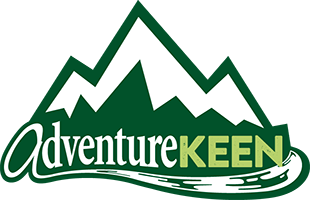Timeless Treasures: The Everlasting Appeal of Nature Study Guides Finders Books
Discover why these guidebooks have become staples that continue to thrive in their popularity with nature lovers.
Environmental Education: The History of Nature Study Guides
May Theilgaard Watts, the daughter of a landscape gardener, attended the University of Chicago for botany and ecology (graduating in 1918) and later attended the Art Institute of Chicago. May became involved with a group that worked on preserving the natural landscape in the Midwest. In the 1940s, she became a full-time naturalist at the Morton Arboretum, where she developed an education program that included classes in gardening, nature literature, art, botany, ecology, creative writing, and geology.
In this role, she created the first Nature Study Guides for her students, who were, at first, teachers. The classes were such a big success that they were requested by Girl Scout leaders, homemakers, and families. The groups continued to grow; soon, doctors, dentists, botany professors, nursery workers, farmers, nurses, principals, and Boy Scouts were in attendance.
Today, these guides also have a wide range of audiences, including professionals, academics, hobbyists, and children. The guides have remained invaluable resources for decades.

Staying Relevant: How These Guides Adapt to Changing Environments
Nature Study Guides have been a favorite resource for more than 60 years and continue to be revised and updated. The most recent changes include updates to the range maps. The hardiness zones have also been adjusted due to climate change, and these details offer more accuracy. The scientific names and families of particular species have also been corrected, and new ones have been added.
The most noticeable recent change is the look; however, they remain recognizable as the classic guides that people have come to trust. While the books cover different regions, they are all part of the series, most using dichotomous keys. Along with the outside look, the icons inside have been tweaked for easier recognition.

Testimonials: Lasting Stories of Connections with Nature
“This Nature Study Series is hard to beat for the person wishing to know plants and understand the differences in physical characteristics. All this comes at a very reasonable cost.”
“I like the whole series of these books. They use deduction to figure out what you’re looking at— be it flower, tree, or animal.”
“I love these mini reference books! They take up very little space on the shelf and are lightweight enough to throw in a day pack, which is much easier than trying to find data or see a screen on a smartphone while you’re out hiking or picnicking.”
Guidebook Gems: Highlighting the Most Popular Editions
Tree Finder by May Theilgaard Watts is the most popular book in the series. People pass it down from generation to generation or purchase it for their kids and grandkids. The range of users is diverse. Below are a few consumer reviews to highlight the trusted guide.
“Even the pros use this book. I’m a certified arborist with 19 years in the green industry. This was one of the books I used to lock down my tree ID skills. I have also used this book to teach future arborists, as well as Boy Scouts and Scout leaders.”
“I had one of these 50 years ago when I studied in elementary school and have always liked it. It makes identifying trees fun!”
“As a certified forester, this is exactly the book we used at West Virginia University for ‘keying’ trees. It’s a great beginner’s book for tree identification. I’d highly recommend it.”
“I first read this in high school for my leaf collection project. I have since purchased this book for my children. I want them to be able to identify trees they ask about on our hikes. It is a wonderful book for all ages.”
Additional Nature Education: New Books by Expert Authors

While the Nature Study Guide series has many classics, two new books are being added this October. Bird Nest Finder, by Dorcas Miller, helps readers identify more than 70 species of birds and their nests. Dorcas is a well-known expert and author of five other guides in the series. Similar to other books in the group, it uses a dichotomous key to help identify aboveground nests by answering questions about their type, size, material, and location.
Another new book in the series is Mushroom Finder. This guidebook provides a dichotomous key to identify fungi by answering questions about the location; appearance; or shape, such as the cap, spores, and stem. The step-by-step instructions can help readers identify more than 300 types of mushrooms that are at least 5mm tall or wide, have tangible thickness, and are fresh. The author is Jacob Kalichman, an expert in his field and a USDA plant pathologist.
Be sure to check out more information on this series at http://naturestudy.com/


